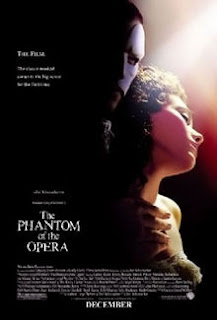Unpopular Opinion: We Never Lose the Child Inside
It's actually an insult to children, since I'm sure many have greater capacity for empathy than many adults ever will.
In school, we learn how to analyze math problems, science experiments, or motivations in literature, but strangely never everyday human behavior. Only the most inspired teachers will set aside time to discuss human behavior, and with mandated testing, that time is smaller than ever.
Otherwise, attempts to understand human thought are relegated to specialized fields: psychology, anthropology, criminology. We save our deepest fears for private therapy sessions rather than discuss and analyze them in a public group. Of course it makes sense to want privacy in some situations, but by separating feelings from our everyday lives, by telling ourselves that certain feelings shouldn't "be there," by pretending that they don't exist, we risk painting ourselves and others as one dimensional.
So we walk through life viewing people the way a four-year-old views them. "He's bad." "She's good." "He's smart." "He's stupid." "She's mean."
Based on, mind you, very little information. A man yells -- he's bad. A woman frowns -- she's mean. A man smiles -- he's nice. Nice people are never mean. Nice people are friends. Good people are never bad, and bad people are never good.
If you think that sounds, well, simplistic, look at the comments that accompany news stories. News stories, especially criminal, paint individuals in very broad strokes. They become not people, but characters. The one accused of committing the crime is the "bad" one with no redeeming qualities. The alleged victims are the "good" ones, who are entirely blameless. While in certain cases, it does play out that way, reality is often more complicated. Why doesn't the news ever reflect this? What does it matter if we learn that the bad guy was sometimes good, and the good guy sometimes bad? Do they think our tiny minds will explode?
Perhaps, since "tiny minds" would describe the majority of commenters. "HE'S SO EVIL!1!1" is the quality of the usual remark. Or if it's a woman: "SHE'S SUCH A BITCH!1!1!1!1" or "[insert derogatory word for female genitalia]." Sometimes you get interesting commentary, but you have to wind your way through dozens of knee-jerk comments that would make a five-year-old shake her head.
The celebrity-fashion industry also preys on this simple mindset. She dumped the Nice Guy. Therefore, she is mean. He yelled at fans who were stalking him for ten blocks. Therefore, he is bad. Tied up in simple good-bad is the equally pat pretty-ugly. She is thin and looks good in her clothes. Therefore, she is nice, because nice people are always pretty (TV told me so). But she frowns! Therefore, she is mean. And old.
To a celebrity magazine, the worst person ever is a person who was "pretending" to be nice, but is really mean! Because people can't ever have a bad day.
Yet in reality, people hold conflicting feelings and perform contrary acts all the time. You can be the kindest person and the worst person within a single hour. Someone can be friendly and easy going, yet commit acts of abuse behind closed doors. The nice person who does charity work can also be the person who drinks too much and kills a pedestrian with her car. The person who seems "mean" might rescue a family from a burning house.
Few would disagree with this. So then why do we continue to hold such simple views about our fellow human beings? Why can't we get that it's possible to hold two conflicting feelings in our head at once?
It probably goes back to primitive times, when we had to size up threats quickly. Are you "safe"? Are you part of my tribe? Can I trust you?
That primitive approach has carried through to this day. Each new person we meet might get the same quick "Can I trust you?"/"Are you safe?" study. While understandable in that context, it has carried over into areas where a quick study isn't as useful. Such as job interviews, where meeting someone for 20 minutes will rarely provide enough information about how that person will perform in the workplace. Or, of course, reading news articles about people we have never met.
The result is that people are held -- and hold others -- to rigid behavioral standards that they can never meet. For example, Catherine, Duchess of Cambridge (formerly Kate Middleton) has to go about smiling like a wax figure while her every public movement gets reported. God forbid she wear the wrong outfit, let alone act frustrated or annoyed for even a moment, or the press would rip her to shreds.
The same can be said for other celebrities, but it is practiced on a smaller scale everyday among the rest of us. People are routinely misunderstood and maligned. At best, this could lead to them being shunned by other members of the "tribe." At worst, this could lead to the person being physically abused, losing freedom, or losing his or her life.
How do we teach more nuanced thinking? The simplest way would be to start at home, with parents talking to their children about how to look beyond the surface. If the parents can't be bothered, then schools should create classes devoted to human behavior, taught by those trained in psychology. These classes should be taken as seriously as any for math, history, or literature. Of course here is where it gets tricky. The instructor would need to be someone highly skilled and good at communicating, or he or she could end up causing damage. Also, given that so many schools have cut their individual counseling programs, it's probably a stretch to expect them to devote funding to classroom study of psychology. Which is too bad, because its value would be almost immeasurable.
As for those of us no longer in school, we should get in the habit of saying: "Hey, what am I doing?" Take time to reason, to question our actions -- like adults.
More widely practiced nuanced thinking might make it easier to see through "nice" people who are sociopaths, or value "mean" people who actually have no bad intentions. At the very least, it would probably make a lot of people much happier. That is something both a child and an adult can appreciate.
The above image is royalty free from Free Images.




Comments
Post a Comment